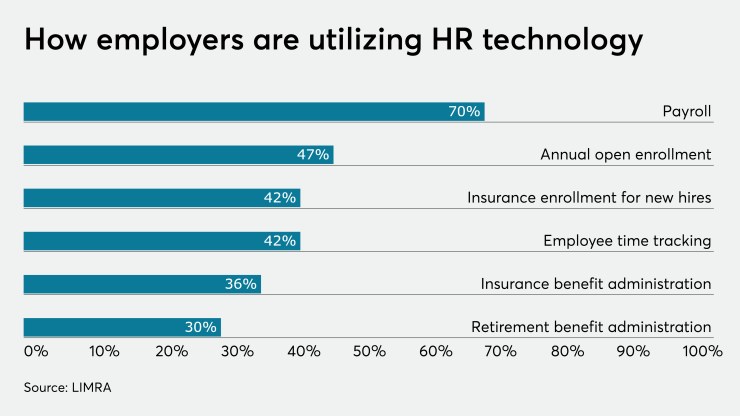LAS VEGAS — When the stock market crashed in 2008, Tim O’Neil, executive director of employee benefits and wellness at Meredith, decided it was time to beef up the company’s financial wellness benefits. At the time the media company — which owns brands including People and Better Homes & Gardens — already offered a wellness program, but wanted to improve other aspects of worker well-being.
“Our chairman came to me and said ‘We need to do more to help our employees get their financial house in order.’ That was the launch of our financial wellness program,” O’Neil said Wednesday, speaking at SourceMedia's Benefits Forum and Expo.
But the challenge was reaching the company’s 5,500 employees which are spread throughout 44 states. So the company decided to turn to technology.
See also:
Meredith leveraged its comprehensive wellness website to develop a personal finance risk assessment for workers. The company also began offering workers $500 to connect with a financial adviser.
After adding the online program Meredith saw a significant improvement in employee financial wellness. When the company first added the benefit, 40% of workers were living paycheck to paycheck, a number which is now decreased to 22%. Similarly, 20% of employees were behind on bills or getting called by creditors — which has now dropped to 8%. In total, 91% of workers felt their financial health had improved because of the company’s platform, O’Neil reported.
“That was really a game changer,” he added.
But bolstering financial wellness is not the only way Meredith has been using technology. The company also has an online emotional well-being coach app to help workers achieve specific health goals. The tool, run by a clinical psychologist, helps employees assess stress and make healthier choices.
“For me, seeing this technology and that emotional well-being focus was really powerful,” O’Neil said.
Meredith recently completed an acquisition of media giant Time, which allowed it to take some of the benefits tools used at Time and incorporate them into its own offerings. For example, the company recently added an “Amazon-like shopping experience” for health plans, O’Neil said. Time had already been using the tool — which allows workers to compare medical plans across carriers and select their best option, in a method similar to e-commerce shopping.
“How are we leveraging technology and solutions to make an impact on the workforce?” he added.
See also:
To ensure workers are taking advantage of these benefits, the company also rolled out an aggressive benefits education campaign, which sought to teach workers how they can better leverage what the company offers. Alongside the education program, O’Neil and his team spent eight weeks hosting 30 employee benefit meetings with workers across the country during open enrollment.
As a media company, Meredith has leveraged its brands to communicate the importance of benefits. For example, the company recently launched an online communications initiative with its brand Travel + Leisure, to encourage employees to take their PTO.
“Everyone is running hard and fast, they want to encourage workers to take their days,” he said.
Moving forward, Meredith continues to look for new ways to use technology to improve benefits. O’Neil said the company will continue to develop solutions themselves and partner with vendors who can address their needs. His best advice to benefit managers when developing new programs? Be creative.
“I try to take a blank canvas approach and that’s a great way to be creative and be innovative,” he said. “Leveraging technology has been really key to our success.”






